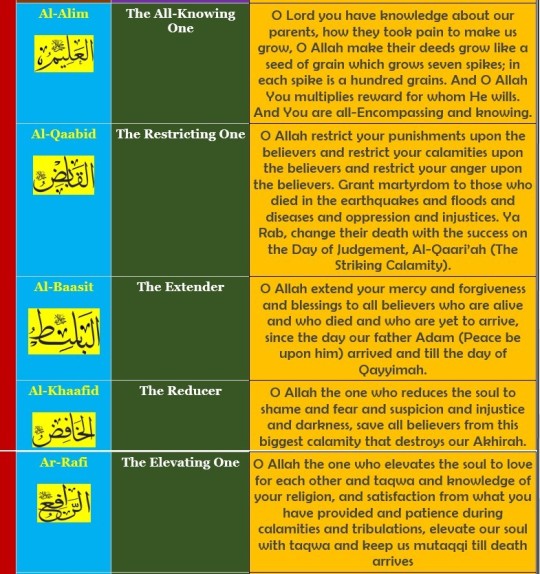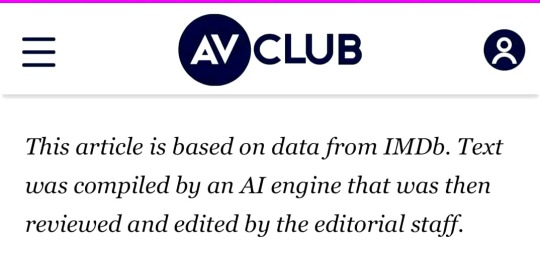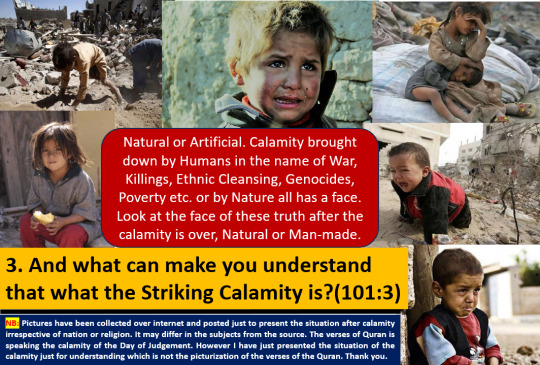#artificial disaster
Explore tagged Tumblr posts
Text
The Calamity- Blessings or Curse
Allah says, “We will certainly test you with a touch of fear and famine and loss of property, life, and crops. Give good news to those who patiently endure, and when disaster strikes them, they say, "Indeed we belong to Allah, and indeed to Him we will return." (إِنَّا لِلهِ وَإِنَّا إِلَيْهِ رَاجِعُونَ) Upon those are pardons and mercy from their Lord, and those are the rightly guided. (2:155-157)
The Prophet (ﷺ) said: “When Allah wills good for His slave, He hastens the punishment for him in this world, and when Allah wills ill for His slave, he withholds the punishment for his sins from him until he comes with all his sins on the Day of Resurrection.” Tirmidhi (2396)
Prophet (ﷺ) said “Every affair of a believer in every situation is always good, and this is possible for a believer only and none but a believer only. If something good happens to him, he is thankful for it and that is good for him. If something bad happens to him, he bears it patiently and say, (إِنَّا لِلهِ وَإِنَّا إِلَيْهِ رَاجِعُونَ) which is good for him.” (Muslim 2999).
It is clear that it is a blessings for one and a curse for one and its not required to be elaborated here. Quran defines CALAMINITY-Next



NB: Someone said, asking Darood (Salawat) is Shirk. It is an innovation by Persians after death of Prophet, compiled into Hadith. Well I do not have knowledge of unseen. So, I have replaced it with the supplication for my most beloved Prophet (ﷺ) and his forefather Ibrahim (Peace, Blessings, mercy of Allah be upon him) in the same way as I ask supplication for myself, my family and whole believers who are my brothers and sister, my neighbour. Its supplication not Darood (salawat) to me and I think its clear now to him.
#quran#islam#allahﷻ#prophet muhammad#tumblog#calamity#natural disasters#war crimes#artificial disaster#war
16 notes
·
View notes
Text
"The first satellite in a constellation designed specifically to locate wildfires early and precisely anywhere on the planet has now reached Earth's orbit, and it could forever change how we tackle unplanned infernos.
The FireSat constellation, which will consist of more than 50 satellites when it goes live, is the first of its kind that's purpose-built to detect and track fires. It's an initiative launched by nonprofit Earth Fire Alliance, which includes Google and Silicon Valley-based space services startup Muon Space as partners, among others.
According to Google, current satellite systems rely on low-resolution imagery and cover a particular area only once every 12 hours to spot significantly large wildfires spanning a couple of acres. FireSat, on the other hand, will be able to detect wildfires as small as 270 sq ft (25 sq m) – the size of a classroom – and deliver high-resolution visual updates every 20 minutes.
The FireSat project has only been in the works for less than a year and a half. The satellites are fitted with custom six-band multispectral infrared cameras, designed to capture imagery suitable for machine learning algorithms to accurately identify wildfires – differentiating them from misleading objects like smokestacks.
These algorithms look at an image from a particular location, and compare it with the last 1,000 times it was captured by the satellite's camera to determine if what it's seeing is indeed a wildfire. AI technology in the FireSat system also helps predict how a fire might spread; that can help firefighters make better decisions about how to control the flames safely and effectively.
This could go a long way towards preventing the immense destruction of forest habitats and urban areas, and the displacement of residents caused by wildfires each year. For reference, the deadly wildfires that raged across Los Angeles in January were estimated to have cuased more than $250 billion in damages.
Muon is currently developing three more satellites, which are set to launch next year. The entire constellation should be in orbit by 2030.
The FireSat effort isn't the only project to watch for wildfires from orbit. OroraTech launched its first wildfire-detection satellite – FOREST-1 – in 2022, followed by one more in 2023 and another earlier this year. The company tells us that another eight are due to go up toward the end of March."
-via March 18, 2025
#wildfire#wildfires#la wildfires#los angeles#ai#artificial intelligence#machine learning#satellite#natural disasters#good news#hope
722 notes
·
View notes
Text
IN 1992 AMERICAN BROADCASTER EXPOSES THE “GLOBAL WARMING”, CHANGED SINCE THEN “CLIMATE CHANGE” SCAM
#weather modifications#global warming#climate change#weather control#artificial weather anomalies#he who controls the weather#controls the world#scammers in politics#scammers#control the human population#crimes against humanity#fear mongering#these people are evil#well carefully staged and organised weather disasters#truth#please share#wwg1wga
27 notes
·
View notes
Text
The End Is Near: "News" organizations using AI to create content, firing human writers

source: X

source: X

source: X
an example "story" now comes with this warning:

A new byline showed up Wednesday on io9: “Gizmodo Bot.” The site’s editorial staff had no input or advance notice of the new AI-generator, snuck in by parent company G/O Media.
G/O Media’s AI-generated articles are riddled with errors and outdated information, and block reader comments.
“As you may have seen today, an AI-generated article appeared on io9,” James Whitbrook, deputy editor at io9 and Gizmodo, tweeted. “I was informed approximately 10 minutes beforehand, and no one at io9 played a part in its editing or publication.”
Whitbrook sent a statement to G/O Media along with “a lengthy list of corrections.” In part, his statement said, “The article published on io9 today rejects the very standards this team holds itself to on a daily basis as critics and as reporters. It is shoddily written, it is riddled with basic errors; in closing the comments section off, it denies our readers, the lifeblood of this network, the chance to publicly hold us accountable, and to call this work exactly what it is: embarrassing, unpublishable, disrespectful of both the audience and the people who work here, and a blow to our authority and integrity.”
He continued, “It is shameful that this work has been put to our audience and to our peers in the industry as a window to G/O’s future, and it is shameful that we as a team have had to spend an egregious amount of time away from our actual work to make it clear to you the unacceptable errors made in publishing this piece.”
According to the Gizmodo Media Group Union, affiliated with WGA East, the AI effort has “been pushed by” G/O Media CEO Jim Spanfeller, recently hired editorial director Merrill Brown, and deputy editorial director Lea Goldman.
In 2019, Spanfeller and private-equity firm Great Hill Partners acquired Gizmodo Media Group (previously Gawker Media) and The Onion.
The Writers Guild of America issued a blistering condemnation of G/O Media’s use of artificial intelligence to generate content.
“These AI-generated posts are only the beginning. Such articles represent an existential threat to journalism. Our members are professionally harmed by G/O Media’s supposed ‘test’ of AI-generated articles.”
WGA added, “But this fight is not only about members in online media. This is the same fight happening in broadcast newsrooms throughout our union. This is the same fight our film, television, and streaming colleagues are waging against the Alliance of Motion Picture and Television Producers (AMPTP) in their strike.”
The union, in its statement, said it “demands an immediate end of AI-generated articles on G/O Media sites,” which include The A.V. Club, Deadspin, Gizmodo, Jalopnik, Jezebel, Kotaku, The Onion, Quartz, The Root, and The Takeout.
but wait, there's more:
Just weeks after news broke that tech site CNET was secretly using artificial intelligence to produce articles, the company is doing extensive layoffs that include several longtime employees, according to multiple people with knowledge of the situation. The layoffs total 10 percent of the public masthead.
*
Greedy corporate sleazeballs using artificial intelligence are replacing humans with cost-free machines to barf out garbage content.
This is what end-stage capitalism looks like: An ouroborus of machines feeding machines in a downward spiral, with no room for humans between the teeth of their hungry gears.
Anyone who cares about human life, let alone wants to be a writer, should be getting out the EMP tools and burning down capitalist infrastructure right now before it's too late.
655 notes
·
View notes
Note
If you want a free pass to talk about hollow ridge stuff you can use this ask as a jumping point, if it helps at all :O Curious about what you have planned for the ecosystem stuff ✨
RIGHT SO! The world of Hollowridge is post-apocalyptic, and the almost-apocalypse was caused by immensely advanced machinery. This machinery and advancement very much included the ability to combine with and alter organic material, meaning genetic reconfiguration, as well as the ability to make meat and steel alloys was very much present.
Organisms that are machines. Machines that are organic. Creatures that are both and neither at the same time. Animals that evolved to fit niches that are incredibly unnatural. That is the vibe that I want the fauna of the Hollowridge ruins to have :]
Overland there are more natural looking animals of course, especially the aforementioned ones that have adapted over years of living in these conditions. But Hollowridge sits on top of a massive MASSIVE labyrinthine supercomplex of halls, labs, ancient bunkers, etc etc. The underground supercomplex is home to the more fucked up fauna: machines gone rogue fulfilling their purpose behaving like animals, creatures made both of flesh and metal built for purposes that they have far outlived. There are even machines dedicated to creating these abominations down there (They're called assemblers and look really fucked up and plant-like.).
It's kinda like, if it was a fantasy dungeon delving venture... but down there is an ecosystem of fucking horrors. Because everything has outlived its original purpose (protecting and upkeeping the underground halls and machines) and has gone rogue and become a self sufficient biome.
Cleaning and repair machines become scavengers, security drones become predators, intruders become the prey.
#honestly as a sidenote. i have a slight struggle with where adri falls on that scale. his swarm is artificial of course#hes made of steel. but in the back of my mind i always think theres also a very organic side to it. i just dont know where#the line is drawn. it is very blurred. its got an unholy feel doesnt it? something completely artificial... and yet. not quite.#ask#anon#the hollowridge disaster#i honestly want to develop a style of drawing these things that feels equally both organic and mechanical#we'll see if im successful with it haha
32 notes
·
View notes
Text
“The Plane”

#ai art gallery#ai art#ai art community#ai art generation#ai art generator#ai art prompts#ai artist#ai artificial intelligence#ai art blog#impending death#disaster#plane#crash
2 notes
·
View notes
Text
I wrote a research paper last semester on the impact of AI in education and when it was time for peer reviews they were all like this. “I only use it for…” and I’m like dude you shouldn’t be using it at all.
My best friend is unfortunately dating a tech bro and is super into it and I cannot get her to understand that it is not a thinking machine and is only as good as the input it’s trained on and could never tell you something new.

#artificial intelligence is a misnomer#there is no intelligence happening here#also if you were curious the studies show that teachers using it to build curricula have had good results#but everything about students using it to complete work has been a disaster#false confidence and unable to identify knowledge gaps and diminished critical thinking skills#not to mention having basically no retention of the material#I am turning into Sarah Connor
144K notes
·
View notes
Text
AI-Powered Disaster Prediction & Recovery
Explore how AI for Natural Disaster Response revolutionizes emergency prediction, real-time alerts, and post-disaster recovery worldwide. Artificial Intelligence (AI) has transformed how societies manage and recover from calamities. AI for Natural Disaster Response empowers early warning, prediction, and smart resource allocation. The technology supports decision-makers with real-time data,…
#ai#AI disaster management#AI for earthquake prediction#artificial intelligence in emergency response#artificial-intelligence#environment#flood detection using AI#machine-learning#technology#wildfire prevention with AI
0 notes
Text
Al-Qaari’ah – Oh! The Striking Calamity
ٱلۡقَارِعَةُ (1) مَا ٱلۡقَارِعَةُ (2) وَمَآ أَدۡرَىٰكَ مَا ٱلۡقَارِعَةُ (3) يَوۡمَ يَكُونُ ٱلنَّاسُ كَٱلۡفَرَاشِ ٱلۡمَبۡثُوثِ (4) وَتَكُونُ ٱلۡجِبَالُ كَٱلۡعِهۡنِ ٱلۡمَنفُوشِ (5) فَأَمَّا مَن ثَقُلَتۡ مَوَٰزِينُهُۥ (6) فَهُوَ فِي عِيشَةٖ رَّاضِيَةٖ (7) وَأَمَّا مَنۡ خَفَّتۡ مَوَٰزِينُهُۥ (8) فَأُمُّهُۥ هَاوِيَةٞ (9) وَمَآ أَدۡرَىٰكَ مَا هِيَهۡ (10) نَارٌ حَامِيَةُۢ (11)










#quran#islam#allahﷻ#human rights#humanity#prophet muhammad#tumblog#calamity#natural disasters#artificial disaster#war#war crimes#injustice
16 notes
·
View notes
Text


Last / Next
#poll#polls#egg#the saga of egg#art#my art#morphea art#an artificial world#adventure anew#what curios will the device reveal#what light may it shed on the disaster taking place
0 notes
Text

Brilliant Scientist Noel
319CB6 / 4CD1F5 / AC53C5 / 4B4746 / DCC06D
#you guys. you guys have No idea how insane this guy gets. you think 'haha smart jerk kid' in bf1? you have NO IDEA#he creates an artificial lin to do work around akras. he meets his boyfriend and decides to exploit labor out of him before he even gets to#his first day of training. hes got the SLUTTIEST OUTFIT ON EARTH. he lives in his lab and its a fucking GARBAGE DUMP#but apparently hes well liked enough to have yurika go there as a meeting point for her and sasha to have The Disaster Talk.#hes fucking like 34. he still acts like hes 12. hes the smartest person alive. he goes :3. its hysterical#noel#bf1#you know what.#bf2#there. i did it#dark#brave frontier#palette#I DIDNT EVEN FUCKING MENTION HE WATCHES HIS BOYFRIEND KILL AN ARTIFICIAL HIM AND CALLS HIM AFTERWARDS LIKE 'hiiiii<3 did anything fun happe#lately?' and just stands there smirking until roy has a breakdown. NORMAL GUY BEHAVIOR#//AND// I DIDNT EVEN MENTION HOW INSANE HIM HAVING A DBB WITH TILITH IS!!!!! THEY MEET ONCE IN THE WHOLE SERIES IF THAT!!!!
1 note
·
View note
Text
DAILY DOSE: Severe winds worsen Southern California fire risks; University of Michigan ends partnership with Chinese university.
SEVERE WINDS INCREASE FIRE RISKS ACROSS SOUTHERN CALIFORNIA Severe winds are causing new fire risks in Southern California, exacerbating an already devastating fire season. Tuesday’s forecast predicts wind gusts up to 70 mph, with the National Weather Service warning of explosive fire growth in Los Angeles and Ventura counties. Recent fires, including the Palisades and Eaton fires, have already…
#Africa#artificial general intelligence#artificial intelligence#Asia#Australia#brain computer interface#Europe#Featured#natural disasters#North America#politics#South America#technology#Wildfires
1 note
·
View note
Text
India’s Disaster Management Tech support for Resilient Communities in Asia
Imagine this: A cyclone is brewing in the Indian Ocean. You receive an alert on your phone, warning you of the impending storm. You quickly check a real-time map, showing the cyclone's path, and you see your area is in its direct line of impact. But instead of panic, you feel a sense of preparedness. You know that your community is equipped with the technology and knowledge to face the storm head-on. This isn’t just a hypothetical scenario, it’s a reality that India is working on, not just within its borders but across Asia.
Did you know? India’s vulnerability to natural disasters has driven it to become a leader in disaster management technology. Satellite imagery, real-time data analytics, and early warning systems are at the core of India's strategy to mitigate disaster impacts. The Indian Space Research Organisation (ISRO) plays a crucial role, providing satellite data that helps monitor and predict disasters with remarkable accuracy.
Apart from that, with the help of the National Disaster Management Authority (NDMA), India has developed a comprehensive disaster risk management framework that guides national policies and serves as a model for other countries. This framework is not just about high-tech solutions; it’s about practical, community-based approaches that ensure everyone, from urban dwellers to remote villagers, can access the resources they need to stay safe.
While taking collaboration into account India understands that disasters don’t respect borders. That’s why it has taken significant steps to assist its neighbors in strengthening their disaster management capabilities. Through the South Asian Association for Regional Cooperation (SAARC) Disaster Management Centre, based in India, resources, technology, and expertise are shared across the region. This has been a game-changer for countries like Nepal, Bangladesh, and Sri Lanka, which now have improved disaster preparedness and response strategies with the help of existing mechanisms that India uses for disaster management strategies. In fact some Indian experts have worked with the Bangladesh Meteorological Department to enhance its cyclone prediction capabilities. The result? A significant reduction in the impact of deadly storms on Bangladeshi communities.
India’s Disaster Management Act of 2005 laid the foundation for its robust disaster management framework. This act led to the creation of the NDMA and mandated the development of disaster management plans at national, state, and local levels. It's not just a law or a policy, it's the backbone of India’s coordinated response to disasters. But it doesn’t stop there. The National Policy on Disaster Management, introduced in 2009, emphasizes building resilience through technology, infrastructure development, and community-based approaches. This policy has not only guided India’s disaster management strategy but also served as a reference point for other countries looking to strengthen their frameworks.
As of the recent years, India has been an active participant in the Sendai Framework for Disaster Risk Reduction (2015-2030). India’s contributions, especially in early warning systems and disaster risk assessment, have been instrumental in shaping global disaster management strategies.
Take another situation into account, A community where every person knows what to do when disaster strikes. This is something India has been working towards. By providing early warnings, real-time data, and predictive analytics, India has helped save countless lives in countries like Nepal and Sri Lanka. But the benefits go beyond immediate disaster response. India’s use of Geographic Information System (GIS)-based tools for risk assessment and planning has been shared with neighboring countries. These tools help communities identify vulnerabilities and take proactive measures to mitigate risks. It’s about empowering people to take charge of their own safety.
In my opinion, India’s contributions to disaster management in Asia are a powerful testament to the country’s commitment to regional stability and human security. The use of advanced technology in disaster management is not just about responding to crises; it’s about preventing them from becoming catastrophic in the first place. India’s willingness to share its technology and expertise with neighboring countries is a reflection of its belief in the importance of regional cooperation. In recent years, climate change continues to increase the frequency and intensity of natural disasters, the need for more advanced technology and stronger international collaboration will only grow. India must continue to innovate and lead by example.
The road to disaster management in Asia is challenging, but with initiatives and collaborations there’s reason for optimism. By continuing to invest in cutting-edge technologies, enhancing regional cooperation, and building resilient communities, India is laying the groundwork for a safer and more secure Asia. This isn’t a journey India can undertake alone. It requires the collective effort of all nations in the region, working together to share resources, knowledge, and expertise. As we look to the future, it’s clear that India’s disaster management technology and collaborative spirit will play a crucial role in shaping a resilient Asia, capable of withstanding the challenges of the 21st century.

#natural disasters#disaster management#policy#foreign policy#india#global#global influence#humanity#management#tech#tech and ai#humanitarian aid#artificial intelligence#conflict#collaboration
0 notes
Text
Artificial Intelligence for Climate Action
Artificial Intelligence (AI) is transforming various sectors, and its impact on climate change mitigation is becoming increasingly significant. By leveraging AI, we can develop more efficient energy systems, enhance environmental monitoring, and foster sustainable practices. This blog post explores how AI is being used to curb climate change. AI for Renewable Energy Improvement One of the…

View On WordPress
#AI and Climate Change#Artificial Intelligence#Carbon Capture and Storage#Climate Change Mitigation#Climate Modeling#Disaster Response#Environmental Monitoring#Precision Agriculture#Renewable Energy Optimization#Sustainable Technology
0 notes
Text










"AH SHIT. HERE WE GO AGAIN"
1 note
·
View note
Text
"He's beautiful..." I say as he sleeps the day away using numerous pairs of striped boxers as a blanket and snoring loudly enough to cause an avalanche.

#shitpost#time to post some goofy shit doo dah doo dah#yeah i need to go to bed#otoko oidon#but yeah i finally managed to watch the movie adaptation of ganso daiyojohan daimonogatari#and this was basically my mind during and after watching it#boy is adachi a disaster dude but i'd be lying if i said he (and the guy who played him) wasn't kinda cute#nobotta oyama is like maybe 2/3 of adachi's height but his design is more or less the same#basically leiji's self insert oc#kinda like luke skywalker being sorta based on george lucas in a way lol#blorbo#this could also describe my f/o tochiro to some extent depending on the source material#like it's basically how he's like on his artificial mushroom planet in cosmo warrior zero#which pretty much solidifies the fact that nobotta is his ancestor#even though nobotta shows up in the same apartment with him on that same planet for some reason#space is warped and time is bendable#leijiverse#i'm gushing over a mangaka's self insert oc wtf am i doing with my life
1 note
·
View note